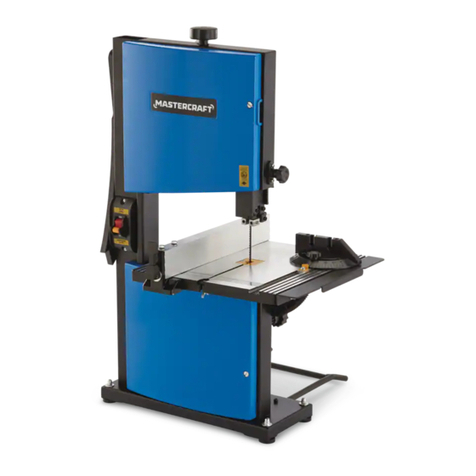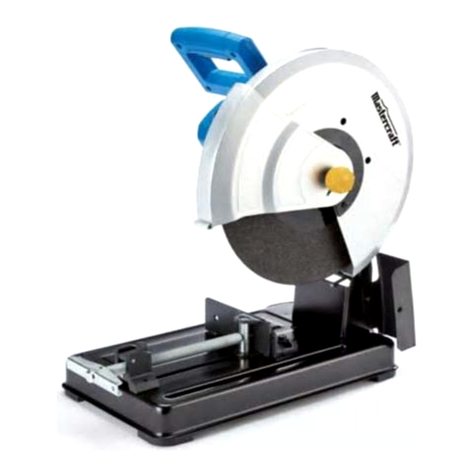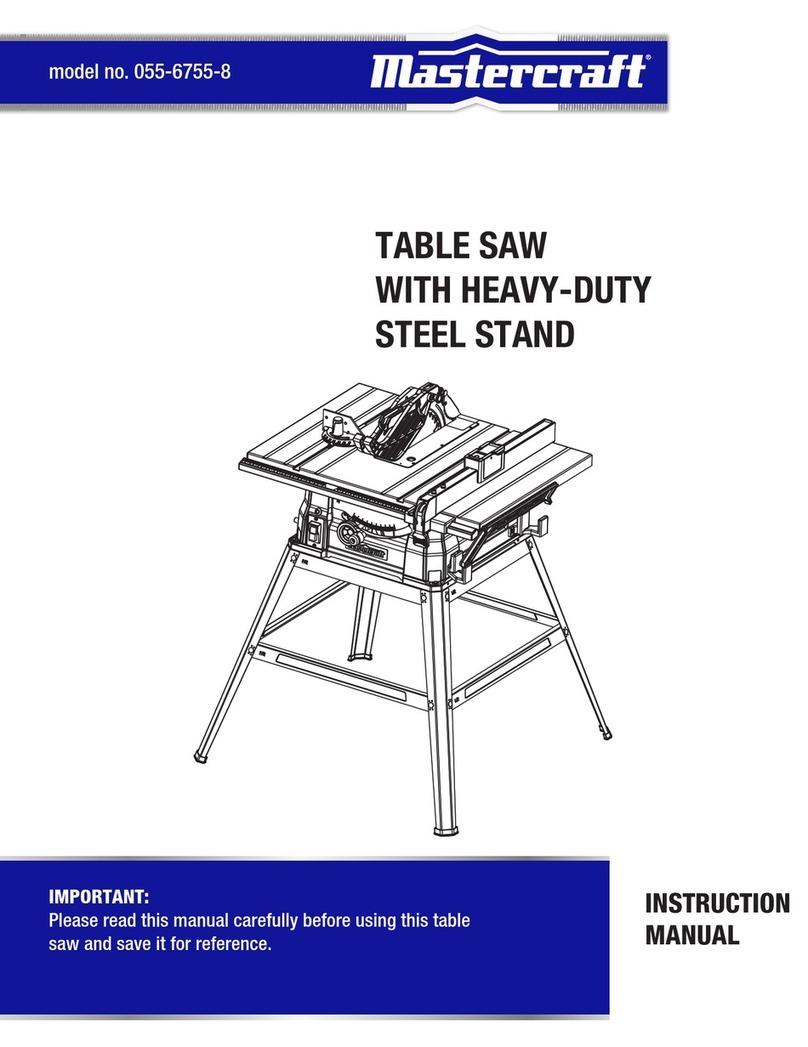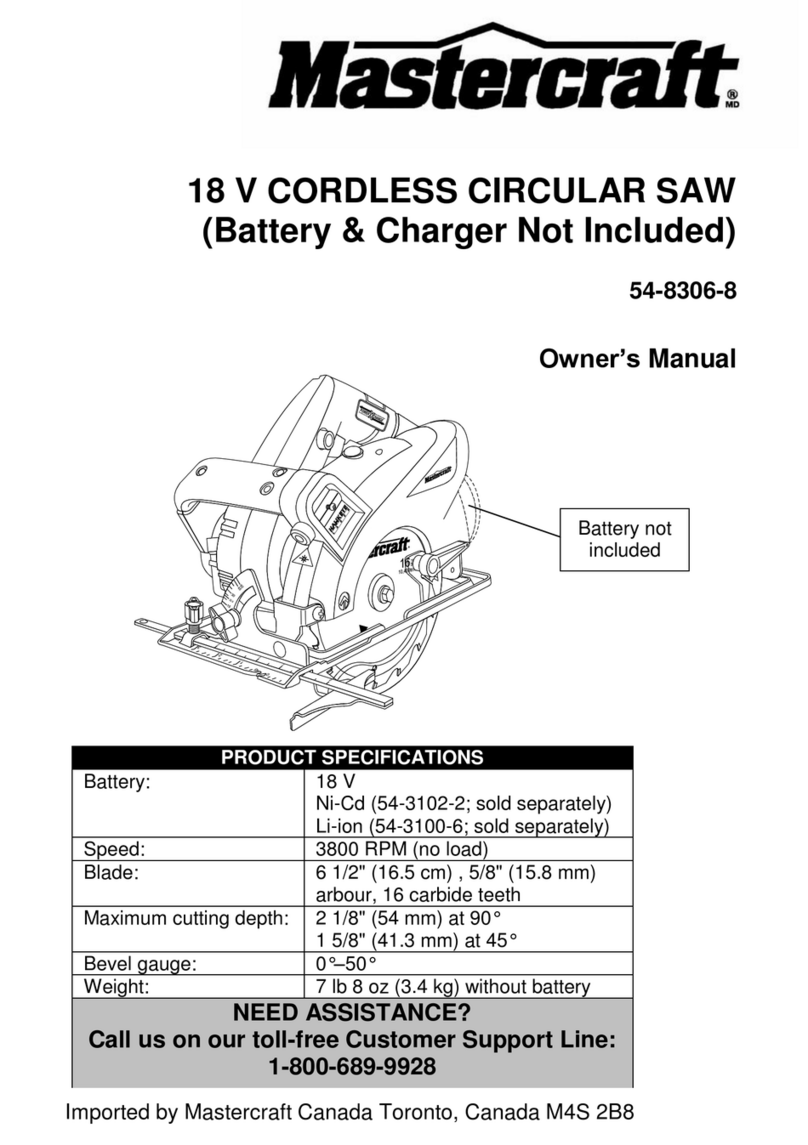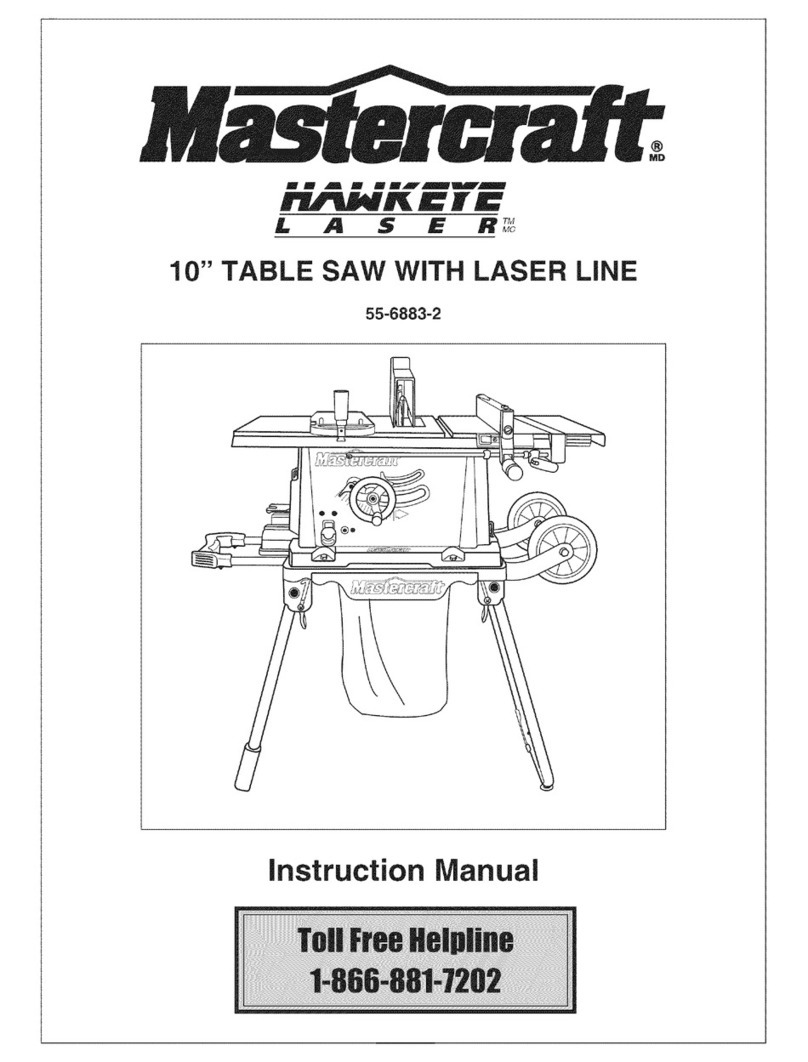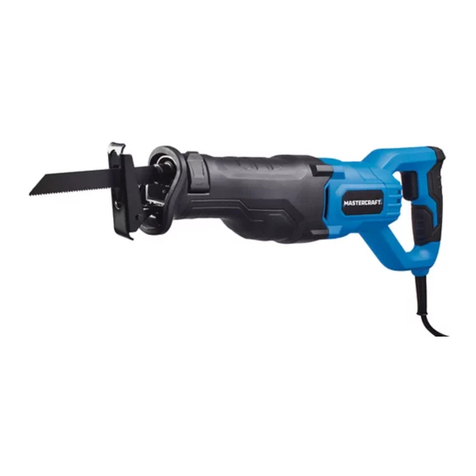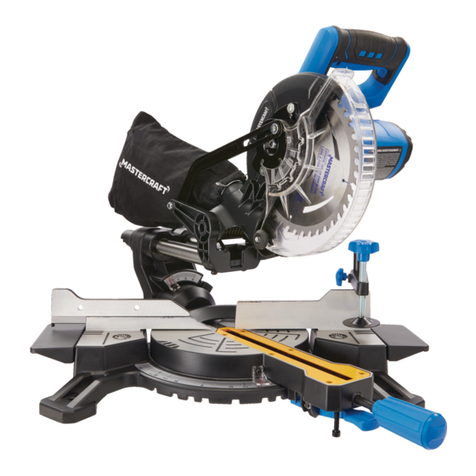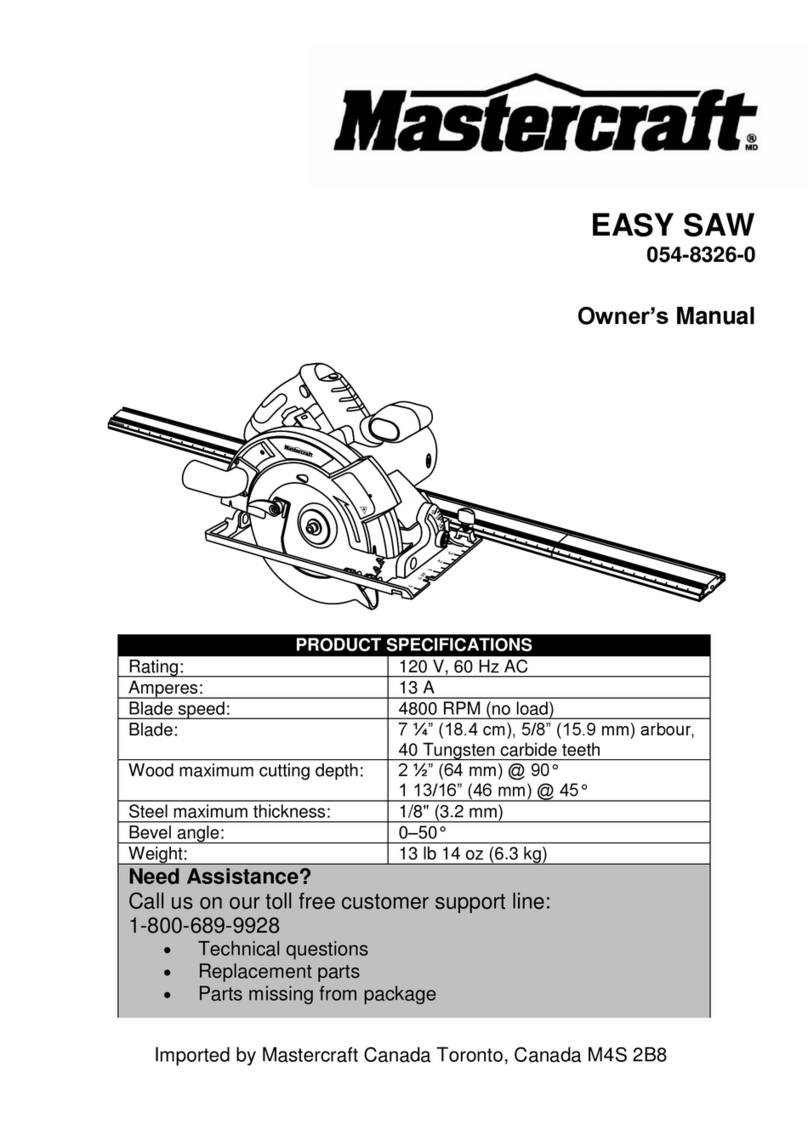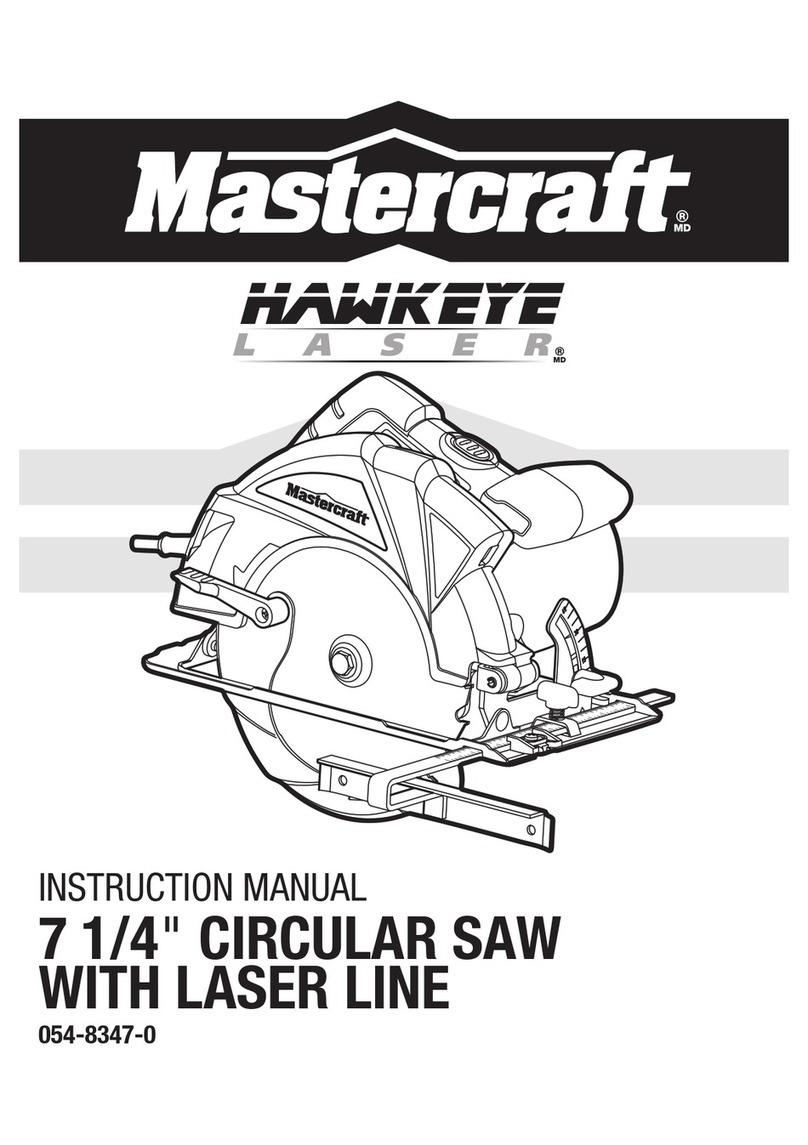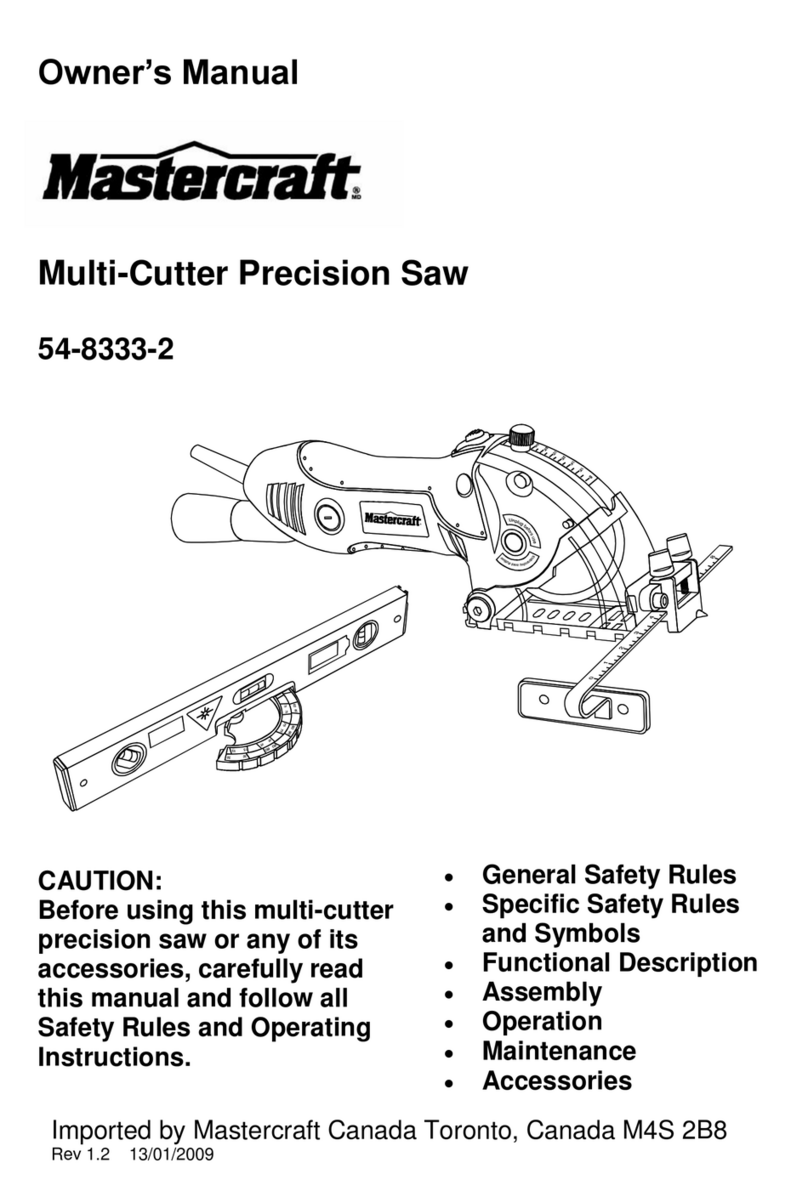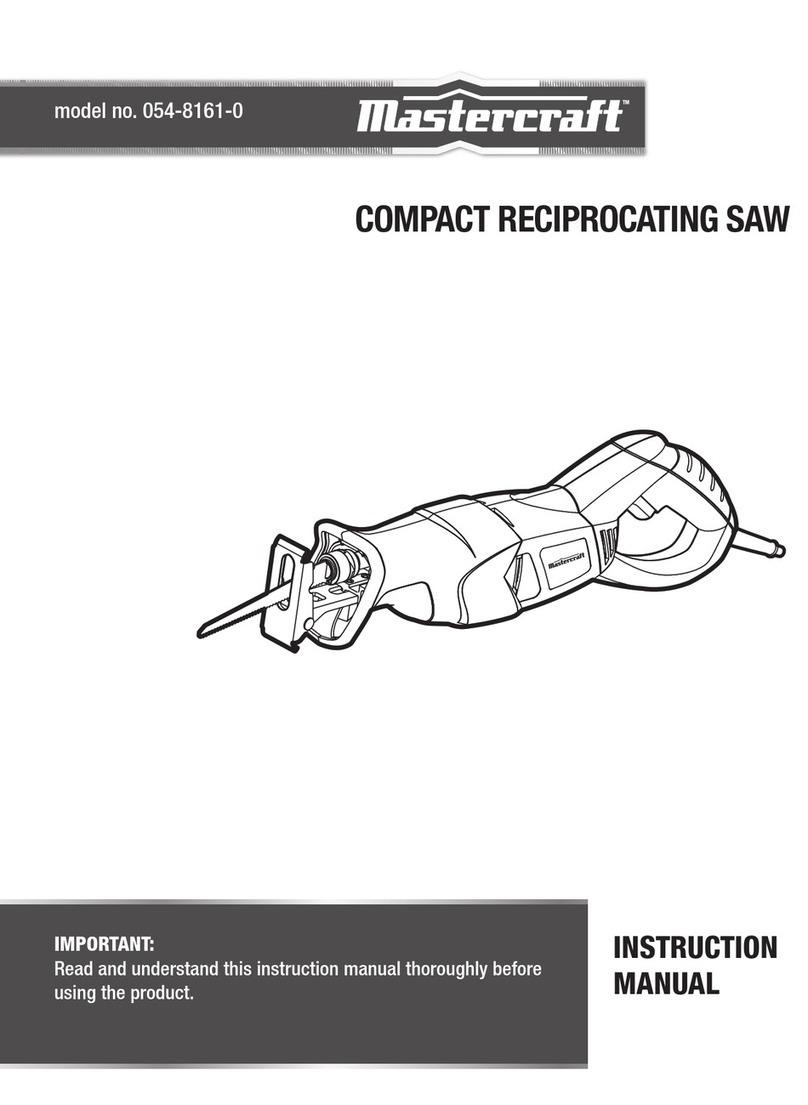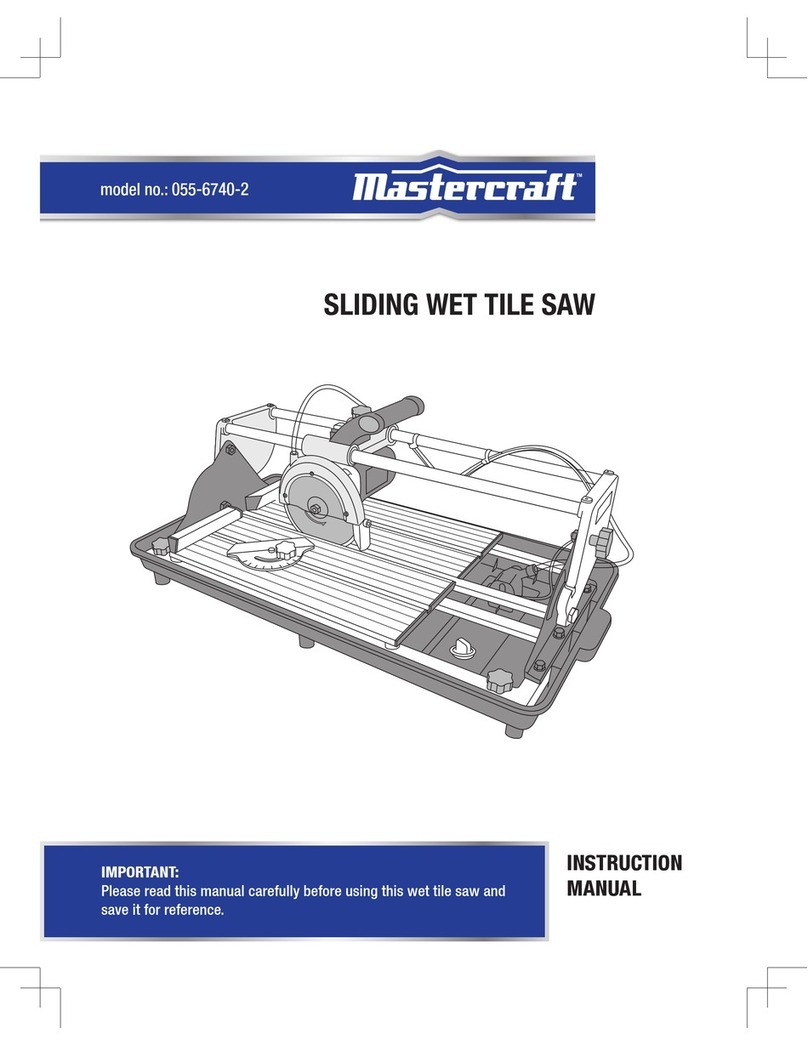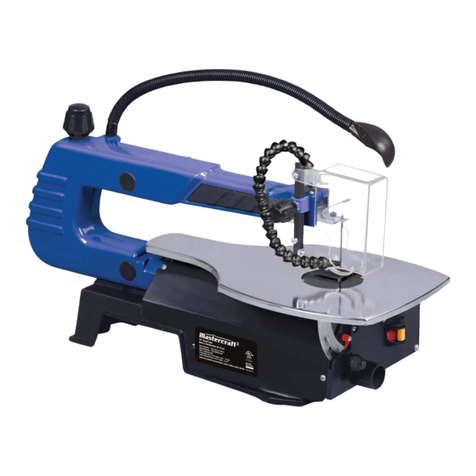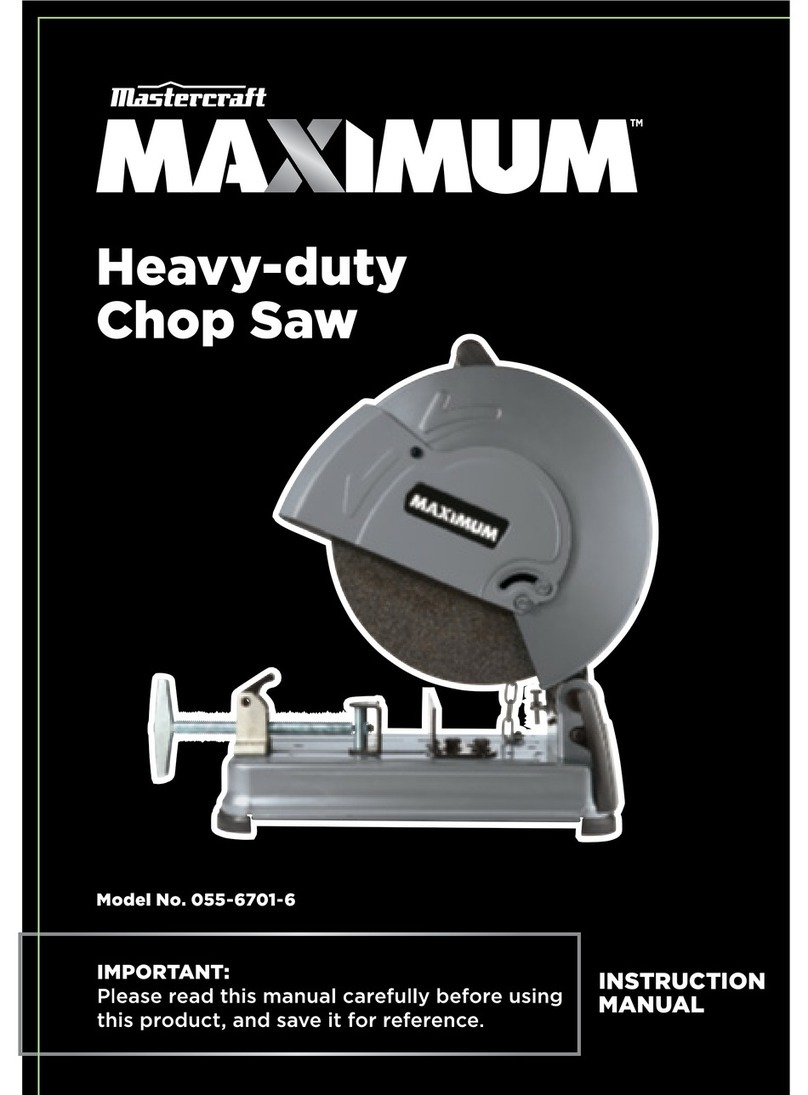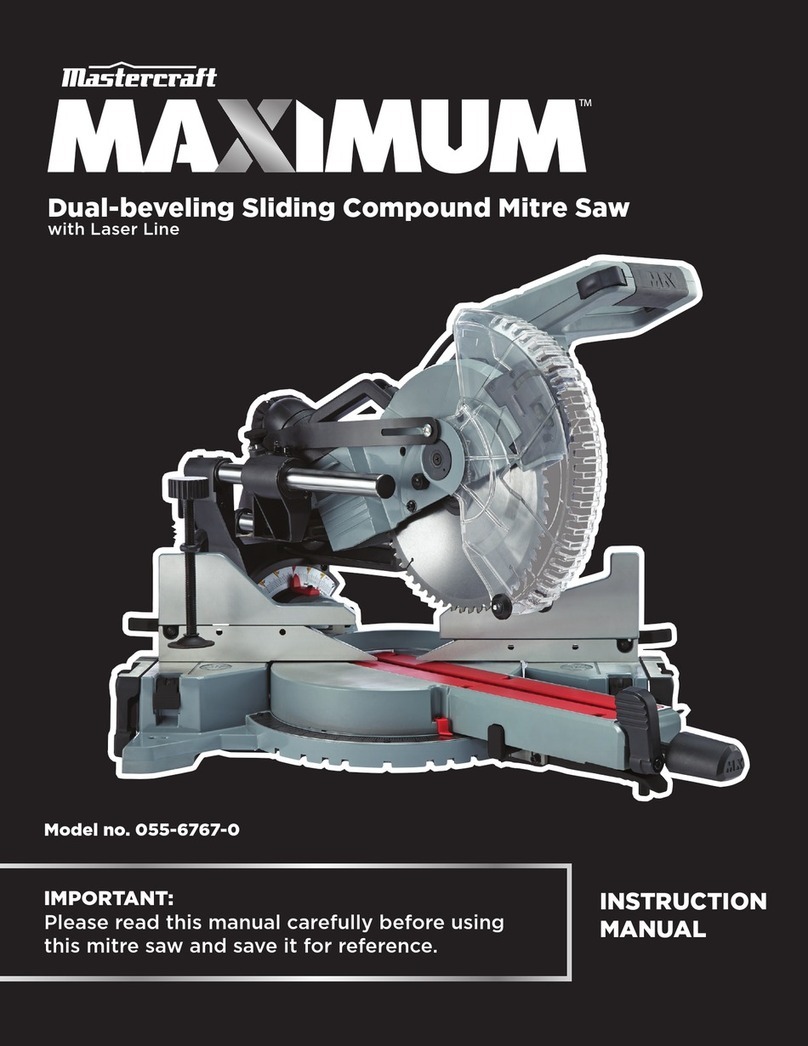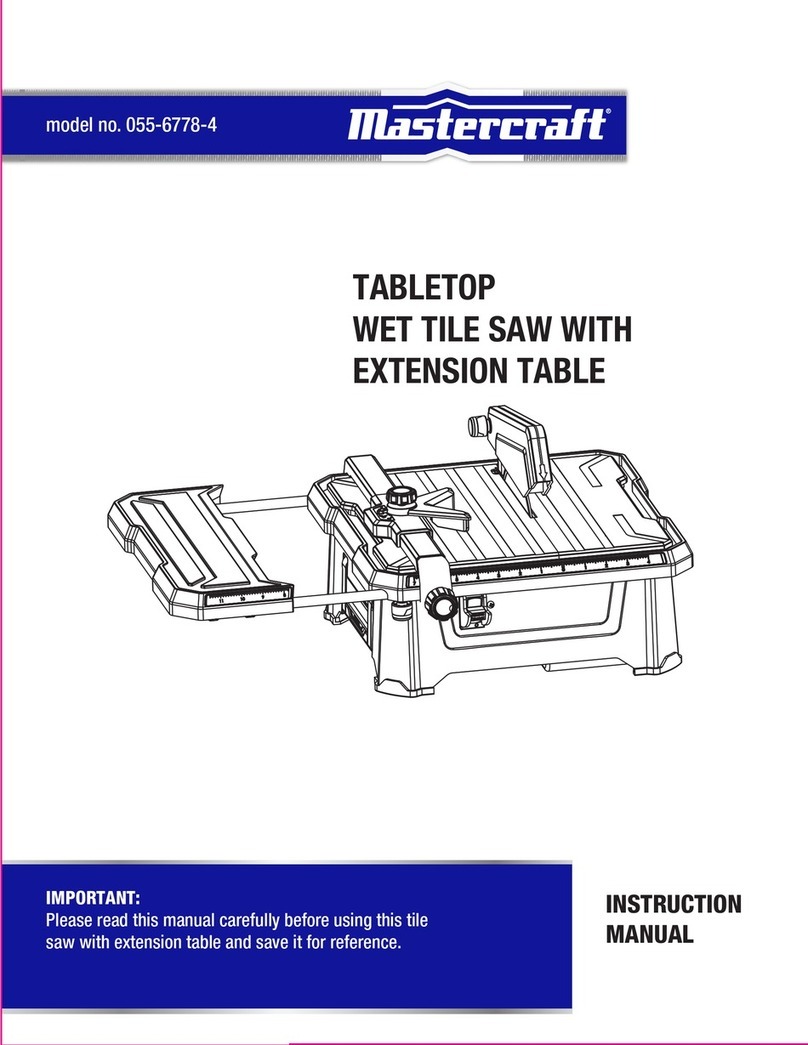
6
GUIDELINES FOR EXTENSION CORDS
Use a proper extension cord. Make sure that extension cords are in good
condition. When using an extension cord, be sure to use a cord heavy enough to
carry the drawn current needed by the Compound Mitre Saw. An undersized cord will
cause a drop in line voltage, resulting in loss of power and overheating. The table
below shows the correct size to use, depending on the cord length and nameplate
ampere rating. If in doubt, use the next heavier gauge: the smaller the gauge
number, the heavier the cord.
Be sure extension cords are properly wired and in good condition. Always replace
a damaged extension cord or have it repaired by a qualified person before using it.
Protect extension cords from sharp objects, excessive heat, and damp or wet areas.
Use a separate electrical circuit for power tools. This circuit must not be less than
#6 wire and should be protected with a time-delay fuse. Before connecting the tool to
the power line, make sure the switch is in the OFF position and the electric current is
rated the same as the current stamped on the motor nameplate; running at a lower
voltage will damage the motor.
Recommended size of extension cords
Total length of the extension cord
Amperage rating of the tool
(120 V circuit only) 25’ (7.6 m) 50’ (15.2 m) 100’ (30.4 m) 150’ (45.7
m)
More than Not more than Minimum Gauge for the extension cord (AWG)
0 6 18 16 16 14
6 10 18 16 14 12
10 12 16 16 14 12
12 16 14 12
Not recommended
WARNING: Ensure the power supply outlet in question is properly grounded. If
not sure, have a licensed electrician check the outlet.
WARNING: To avoid electrical hazards, fire hazards, or damage to the tool,
use proper circuit protection.
SPECIFIC SAFETY RULES
Use only crosscutting saw blades. When using the mitre saw to cut non-ferrous
metal, make sure that the blade has a negative hook angle.
IMPORTANT: Do not use thin-kerf blades. Thin-kerf blades can deflect and contact
the guard, which can cause possible injury to the operator.
Do not operate the Mitre Saw until it is completely assembled and installed
according to these instructions.
If not thoroughly familiar with the operation of Mitre Saws, seek guidance from a
supervisor, instructor, or other qualified person.
Always hold the work firmly against the fence and table. Do not perform any
operation free hand; use a clamp or vise whenever possible
Keep hands out of the path of the saw blade. If the work piece causes the hands to
be within the “no hands” zone (3’’ (7.6 cm) from the blade), the work piece should be
clamped in place before making the cut.
Be sure that the blade is sharp, runs freely, and is free of vibration.
